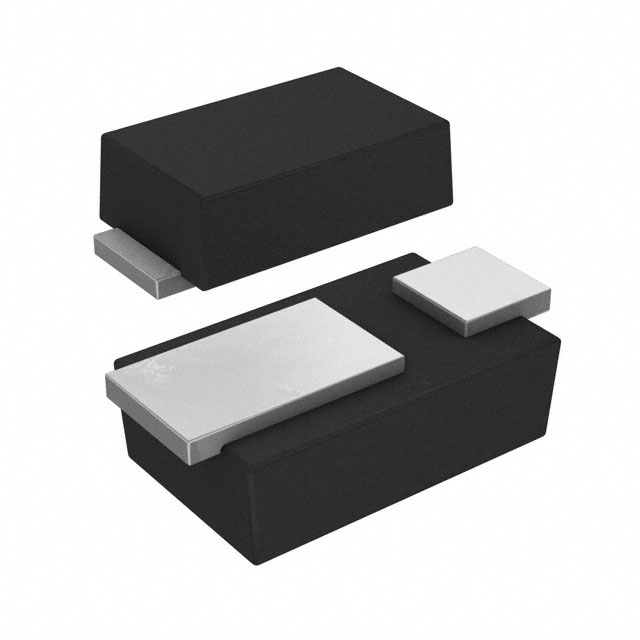Viz Specifikace pro podrobnosti o produktu.

STPS3H100UF
Introduction
STPS3H100UF is a high-performance Schottky rectifier designed for use in various electronic applications. This entry provides an overview of the product, including its category, use, characteristics, packaging, specifications, pin configuration, functional features, advantages and disadvantages, working principles, application field plans, and alternative models.
Product Overview
- Category: Semiconductor/Electronic Component
- Use: Rectification in power supply circuits, voltage clamping, and freewheeling diode applications.
- Characteristics: High efficiency, low forward voltage drop, fast switching, and low leakage current.
- Package: TO-220AC
- Essence: High-performance Schottky rectifier
- Packaging/Quantity: Available in reels or tubes, quantity varies based on supplier.
Specifications
- Voltage Rating: 100V
- Current Rating: 3A
- Forward Voltage Drop: Typically 0.55V at 3A
- Reverse Leakage Current: Maximum 50µA at 100V
- Operating Temperature Range: -65°C to +175°C
- Storage Temperature Range: -65°C to +175°C
Detailed Pin Configuration
The STPS3H100UF follows the standard pin configuration for a TO-220AC package: 1. Anode (A) 2. Cathode (K)
Functional Features
- Fast switching speed
- Low forward voltage drop
- High reliability and ruggedness
- Low thermal resistance
Advantages and Disadvantages
Advantages
- High efficiency
- Reduced power loss
- Compact design
- Suitable for high-frequency applications
Disadvantages
- Higher cost compared to standard rectifiers
- Sensitive to reverse voltage spikes
Working Principles
STPS3H100UF operates based on the Schottky barrier principle, where the metal-semiconductor junction allows for faster switching and lower forward voltage drop compared to conventional PN-junction diodes. When a forward bias is applied, the rectifier conducts with minimal voltage drop, making it suitable for high-frequency applications.
Detailed Application Field Plans
STPS3H100UF is commonly used in the following applications: - Switching power supplies - DC-DC converters - Voltage clamping circuits - Freewheeling diodes in inductive load applications
Detailed and Complete Alternative Models
- STPS3L60UF: 60V, 3A
- STPS3L40UF: 40V, 3A
- STPS3H200UF: 200V, 3A
- STPS3H150UF: 150V, 3A
In conclusion, STPS3H100UF is a high-performance Schottky rectifier with excellent characteristics and functional features, making it suitable for various electronic applications requiring efficient rectification and fast switching capabilities.
Word Count: 409
Seznam 10 běžných otázek a odpovědí souvisejících s aplikací STPS3H100UF v technických řešeních
What is the maximum voltage rating of STPS3H100UF?
- The maximum voltage rating of STPS3H100UF is 100V.
What is the maximum forward current of STPS3H100UF?
- The maximum forward current of STPS3H100UF is 3A.
What is the typical forward voltage drop of STPS3H100UF at 3A?
- The typical forward voltage drop of STPS3H100UF at 3A is 0.55V.
What is the reverse recovery time of STPS3H100UF?
- The reverse recovery time of STPS3H100UF is typically 35ns.
What are the typical applications of STPS3H100UF?
- STPS3H100UF is commonly used in power supplies, LED lighting, motor control, and automotive systems.
What is the operating temperature range of STPS3H100UF?
- The operating temperature range of STPS3H100UF is -65°C to 175°C.
Is STPS3H100UF RoHS compliant?
- Yes, STPS3H100UF is RoHS compliant.
What is the package type of STPS3H100UF?
- STPS3H100UF is available in a DPAK (TO-252) package.
Does STPS3H100UF have any special handling or storage requirements?
- STPS3H100UF should be stored in an anti-static bag and handled with appropriate ESD precautions.
Can STPS3H100UF be used in parallel to increase current handling capability?
- Yes, STPS3H100UF can be used in parallel to increase current handling capability, but proper thermal management is essential.

